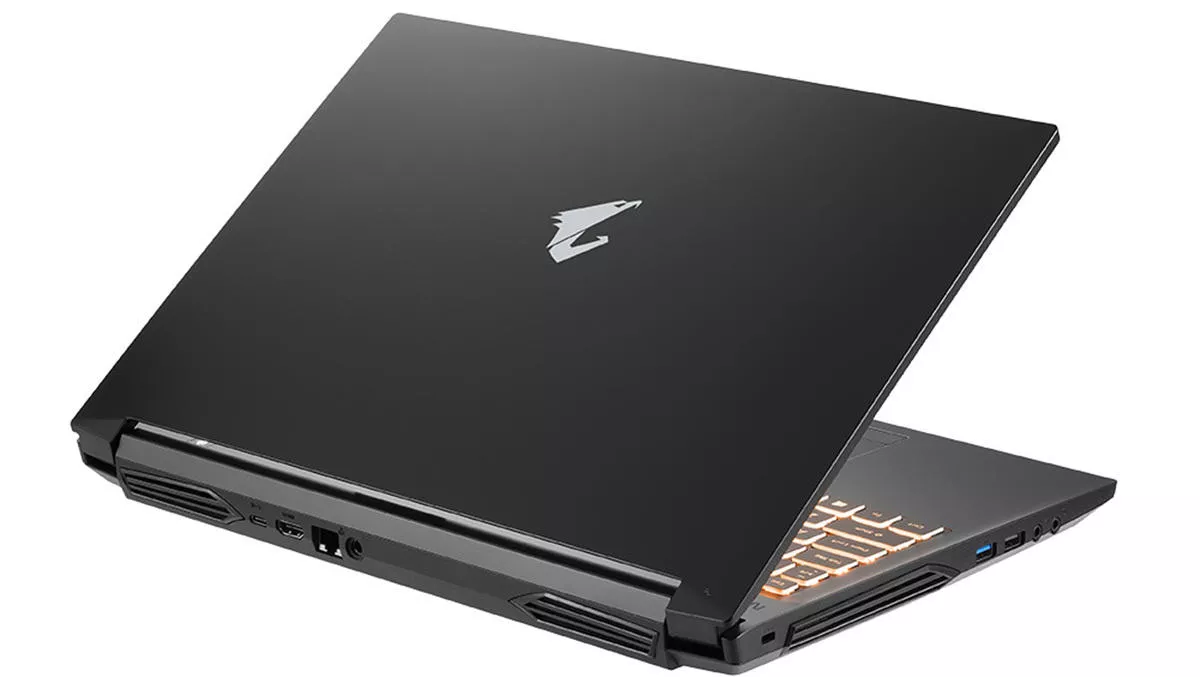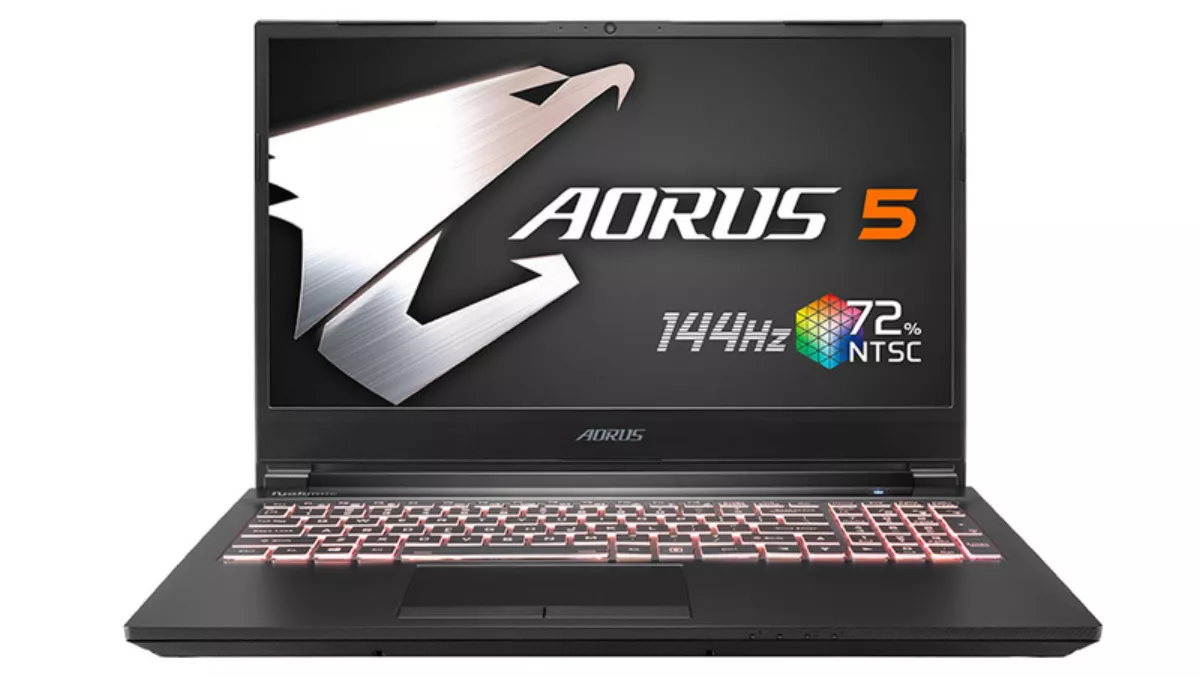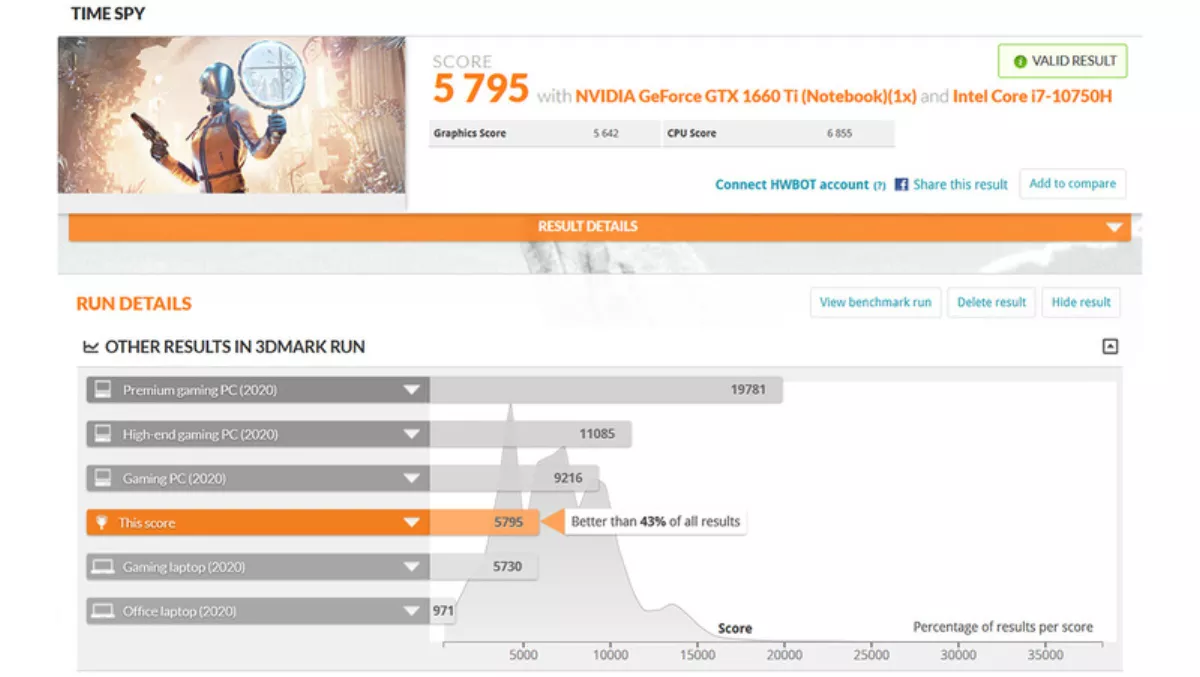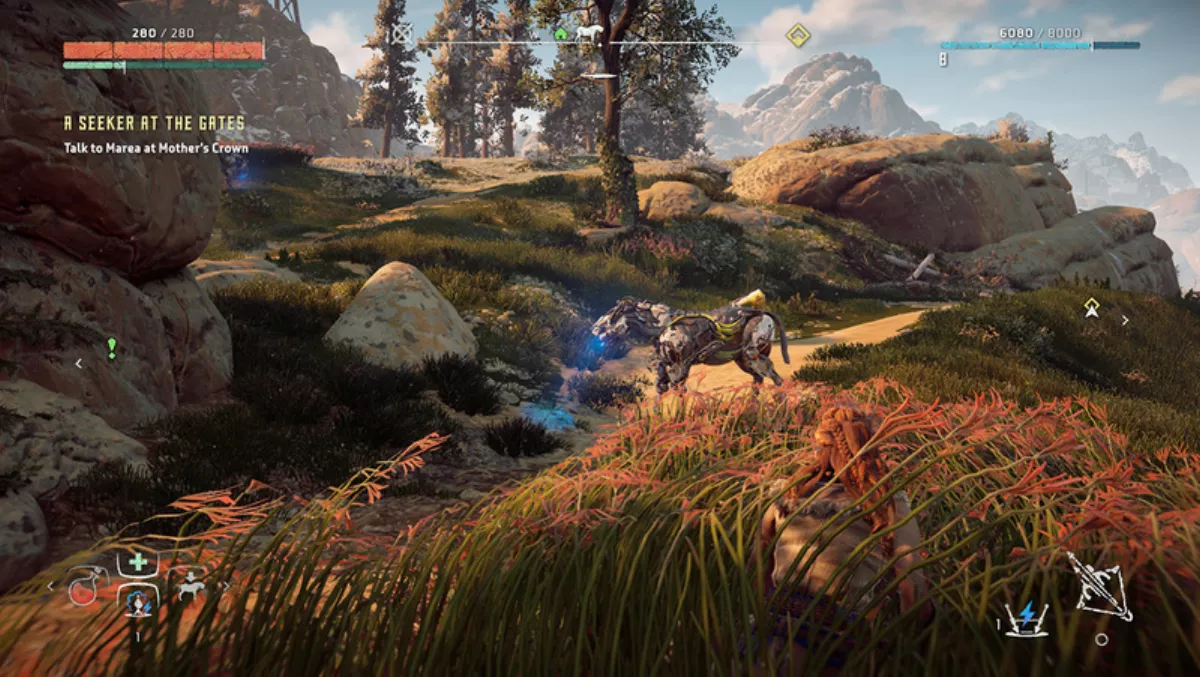
Hands-on review: Gigabyte Aorus 5 SB laptop
Gigabyte's Aorus brand is aimed more towards gamers than business/home office. Whilst the Aorus 5 KB sports an Nvidia GeForce RTX 2060 graphics card, the SB version that we were sent to review is equipped with the rather more humble-sounding GeForce GTX 1660 Ti. Other than this, both flavours of the Aorus 5 are the same.
So, let's have a look at the specs for the review machine first.
The screen is a 1920x1080 15.1" IPS panel with an impressive maximum refresh of 144Hz. The display is crisp and clear. The screen resolution may seem a little ordinary, but it is fine on a 15-inch screen.
The review machine was running Windows 10 Home. If you were considering buying one of these PCs, there's the option of Windows 10 Pro. For most users, though, Windows 10 Home is fine.
The laptop is powered by a 10th Generation Intel Core i7-10750H (which boosts to a max frequency of 5GHz). This is the notebook version of Intel's i7 CPU. It has 6 cores/12 threads and runs at a lower frequency than its closest desktop equivalent, the 8 core/16 thread Core i7 10700K.
There's 8GB of DDR4-2666 (upgradable to 64GB 2933Mhz) RAM. Storage is provided by a 512GB NVMe SSD (the laptop supports both a 2.5" HDD/SDD and 2x M.2 SSD).
There are 3 USB Type-A slots (1xUSB 2.0, 1XUSB 3.2 Gen 1, 1xUSB 3.2 Gen 2). The laptop supports 2 extra displays via the HDMI, Mini DisplayPort 1.2 and DisplayPort 1.4 via the Type-C USB 3.2 Gen 2.
The laptop has the latest connectivity features covered. The built-in Bluetooth V5.0, Realtek Ethernet and the new Wi-Fi 6 for fast wireless networking are all you need.
The chassis is pretty light for a gaming laptop at only 2.2kg. It is constructed of plastic, so I wouldn't say it was rugged. But it is svelte, at 361mm x 258mm and just under 30mm thick. Again, not bad for gaming laptops which often tend to be oversized and on the heavy side.

With the only difference between the SB and the KB being the Nvidia GeForce GTX 1660 Ti GDDR6 6GB, it's worth pointing out what this means, compared to the KB's RTX 2060. Practically speaking, for most games, they are pretty much identical. The main disadvantage of the GTX 1660 Ti, is its inability to utilise the DLSS 2.0 of the RTX Tensor Cores. Tensor Cores utilise AI for a better image with less GPU overhead. i.e. better graphic faster frame-per-second. Only selected games released in the last couple of years use this technology. The GTX 1660 Ti, is now capable of the RTX's real-time ray-tracing, but it doesn't have the RT Cores of the RTX, so don't expect the same performance. The GTX 1600 Ti is still a decent GPU for a laptop gaming machine.
Next up, some tests.
Using Performance Mark, the laptop attained a decent overall Passmark of 4111.4 which is a 59%-tile result. Both the CPU and GPU sat in the 66%-tile range. Being mindful that this includes top-of-the-range desktop gaming PCs, the result is not as bad as it looks.
A desktop Core i5 10600K gets around 75%-tile and a top-of-the-range Geforce RTX 2080 Ti gets a 99%-tile result. Basically, there's some pretty stiff competition out there, most of which will not be as portable as the Aorus 5!
Let's take a closer look at the GPU with 3DMark running the TimeSpy benchmark. The laptop scored 5795 in the test, putting in in the 43%-tile range, but just above 3DMark's suggested score for a gaming laptop in 2020.

Despite the theoretical tests seeming a little underwhelming, they are pretty reasonable for a gaming laptop. You are just not going to easily find a laptop that can compete with a high-end gaming desktop machine.
I tested the laptop with a couple of games. First, Microsoft's Gears Tactics. This is not really a high-performance game, but in any case, the Aorus 5 ran it fine, benchmarking at an average framerate of 117.5 FPS at the default graphics settings, which looked very nice.
The second game I tried was the newly released Horizon Zero Dawn. I was intrigued, as many players are having some issues running the game at a constant framerate. The Aorus 5 had no problems at all with this rather demanding game. The default graphics settings, which still looked very presentable, setting netted an average of 62 FPS- which is twice that of the original PlayStation 4 release of the game.

Under load, I noticed that the fans on both sides of the laptop do put out a considerable amount of heat. The fans, themselves are audible when under load, but the Aorus 5's Nahimic 3D audio can be turned up loud enough to cover up any fan noise.
The only criticism of the spec of the laptop send over for review is the rather limited 512GB NVMe drive. This is great for the OS, but really needs to complemented by another hard drive for data/games etc. In saying that, the 8MB of RAM in the machine is a bit tight, as well. I'd suggest no less than 16GB of RAM to be on the safe side.
Users looking for a laptop for more creative endeavours will find the Aorus 5 SB a more than capable unit. The ability to attach multiple additional monitors means that the likes of Photoshop and even 3D applications can be used with the machine, with the added bonus of portability to show work to clients etc.
Streamers looking for a laptop to empower their channels, with have no trouble, as well. Streaming software such as OBS Studio and Streamlabs OBS takes full advantage of NVENC encoding, unique to Nvidia GPUs, such as the equipped GeForce GTX 1660 Ti.
Gigabyte's Aorus 5 SB, whilst lacking the RTX card of its stablemate is still an impressive gaming laptop. It is a long way from a high-end gaming desktop, but it is still more than capable of playing the very latest PC games and at a more than reasonable level of visual fidelity. Similarly, the laptop makes for a worthwhile investment for anyone wanting to partake in more creative work.
Personally, I like the small size and relatively light weight, even if it does feel a bit plasticky and fragile. The Aorus 5 SB's portability easily outweighs the device's compromises over a gaming desktop when it comes to portable PC gaming. I really liked the laptop and you should to.


